John Hurrell – 4 October, 2024
Held up against the sky, all have a tactile sensibility—even though one lacks any relief protuberances and indentations at all. The artist's imaginative powers are on full display, rather than presenting a scientific or learned astronomical presentation, for there is a nuanced element of exuberant improvisation; they are not entirely databased globes that are naturally ‘geographical' by mimicking the planet Earth, or ‘astronomical' by mimicking Mars.
Auckland
Ruth Watson
Other Worlds
2 September - 14 October 2024
In this unusual outdoor display, Ruth Watson presents four large sculptures (intially from 2018) that are inventive thematic explorations of the notion of ‘globe’; three focussing on aspects of planet Earth, the other on our fanciful speculations about Mars. Some push against the notion of a perfect planetary sphere, vigorously challenging the idea of an impeccable ball as a model.
This suite of interstellar globes has been previously shown for two years in Te Papa’s forecourt, supported by the Wellington Sculpture Trust. They are mounted on three-legged tripods so you can look underneath and perhaps spot the subtle allusion of surveying, with the supporting ‘theodolites’. The spheres are high: their tops are about fifteen feet off the ground. You cannot view the upper halves properly, except in profile from a distance, so the emphasis is on their ‘readable’ lower halves.
A few are balloon\breast-like or misshapen forms that hint of the monstrous because of their size, although we can’t get close: whopper almost-rotund tits, coated with bizarre fictitious geographies, that if dropped would easily squash you. One is lumpy like a potato, with striations and cavities cut into its sides. Its rainbow colours make it look like a boiled sweet.
Held up against the sky, all have a tactile sensibility—even though one lacks any relief protuberances and indentations at all. The artist’s imaginative powers are on full display, rather than presenting a scientific or learned astronomical presentation, for there is a nuanced element of exuberant improvisation; they are not entirely databased globes that are naturally ‘geographical’ by mimicking the planet Earth, or ‘astronomical’ by mimicking Mars. The tripods are witty in that they could vaguely be mistaken for derricks—which is another (shrewd ‘corporate?’) meaning again.
There are four distinct types of globe:
One is the white, yellow and orange European Space Agency (ESA) model (white and orange) that is wonky and misshapen like a bulbous tuber.
Another is based on a 17th century religious tract speculating about the planet before God created the oceans, so the planet looks dry, gnarled, crinkled and textured like a walnut.
A third is Mars with its legendary straight-lined ‘canals’ but now with its blue channels and cities named after various scholars, philosophers, warriors, diarists and film-makers, often with an unexpected sly humour. Indeed it is an entertaining work if you look at it closely.
The fourth is Earth with an ominous black sea with orange and yellow forms indicating the dense presence of carbon on the major continents. In the original source material that Watson researched, the sea-beds are ignored, and so likewise with her.
Of the four, I found the ‘canal’ and language-covered Mars and the sealess Earth the most rivetting. Altogether, the four globes work well together as a suite.
The only drawback is that this show is a bit far away from Auckland Tāmaki Makaurau. If you don’t drive a car, it takes a bit of an effort getting to it in Manurewa, but you can get the train (and then the bus) easily enough and enjoy a large part of the day wandering around the lovely gardens. There is a bit of unusual birdlife too: the quail are surprisingly tame.
This is a great presentation from Watson. Not as intimate as her recent Sumer show but one involving a different sort of looking. (Up instead of down). It is more overtly speculative perhaps, in terms of history and space—definitely more bodily—and great fun thinking about human comprehension of the waters and massive continents we sometimes move readily over and in between.
John Hurrell
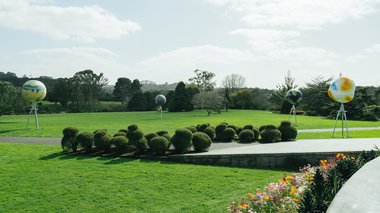
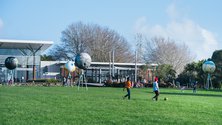
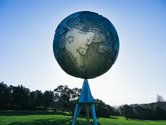
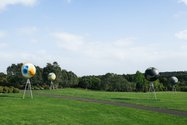

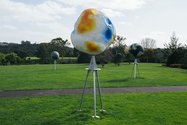
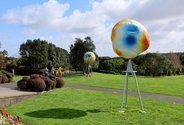
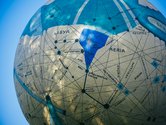
 Two Rooms presents a program of residencies and projects
Two Rooms presents a program of residencies and projects Advertising in this column
Advertising in this column



This Discussion has 0 comments.
Comment
Participate
Register to Participate.
Sign in
Sign in to an existing account.